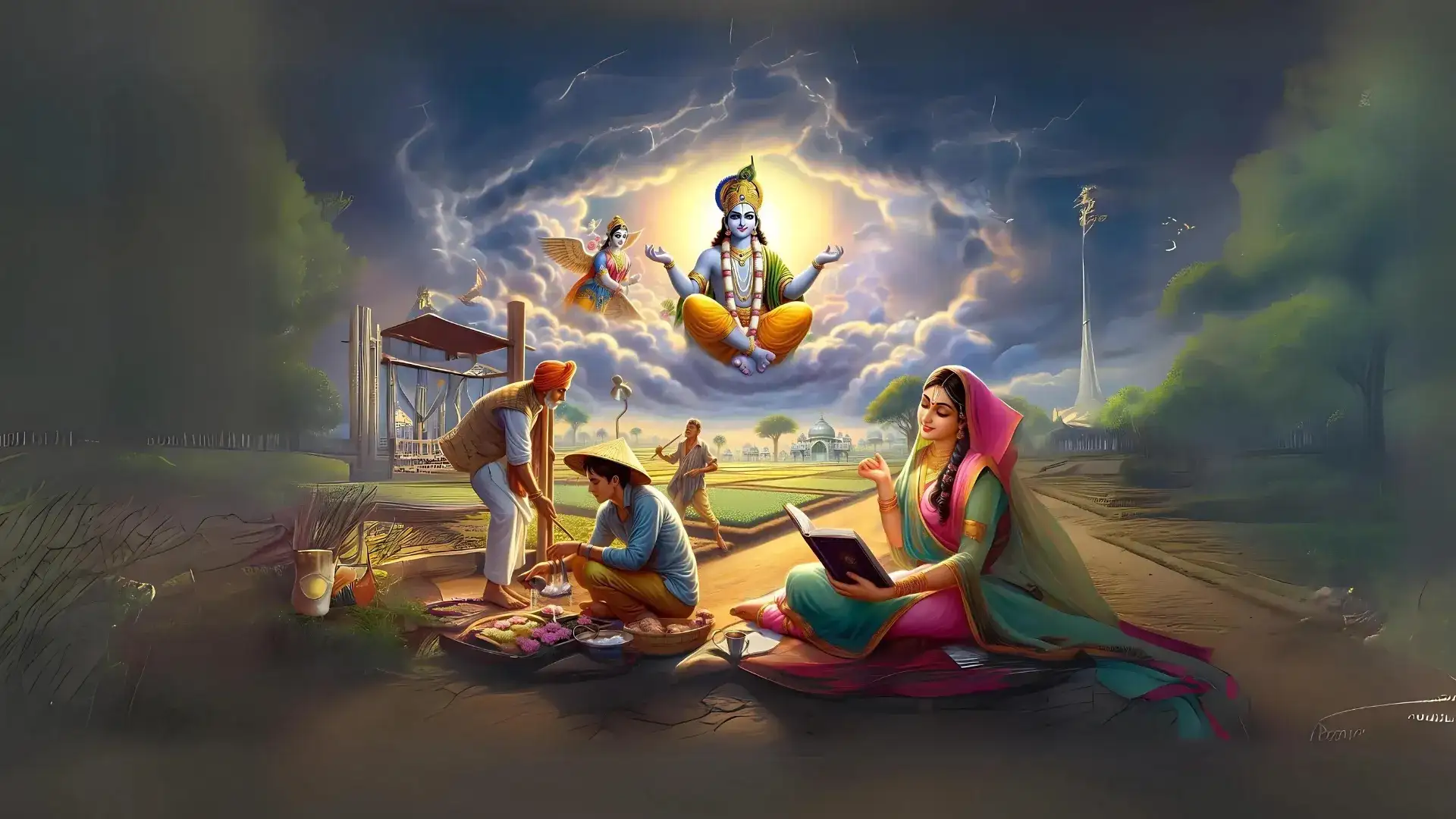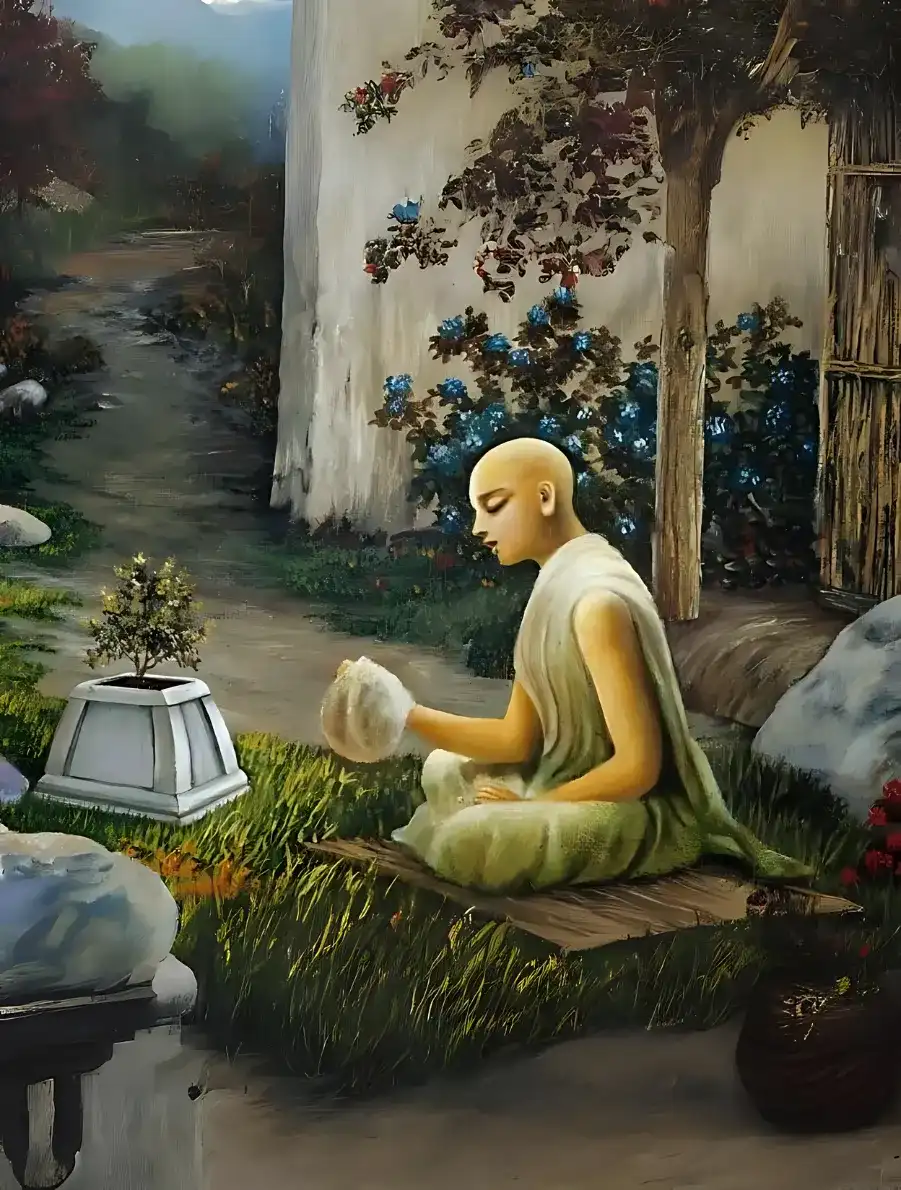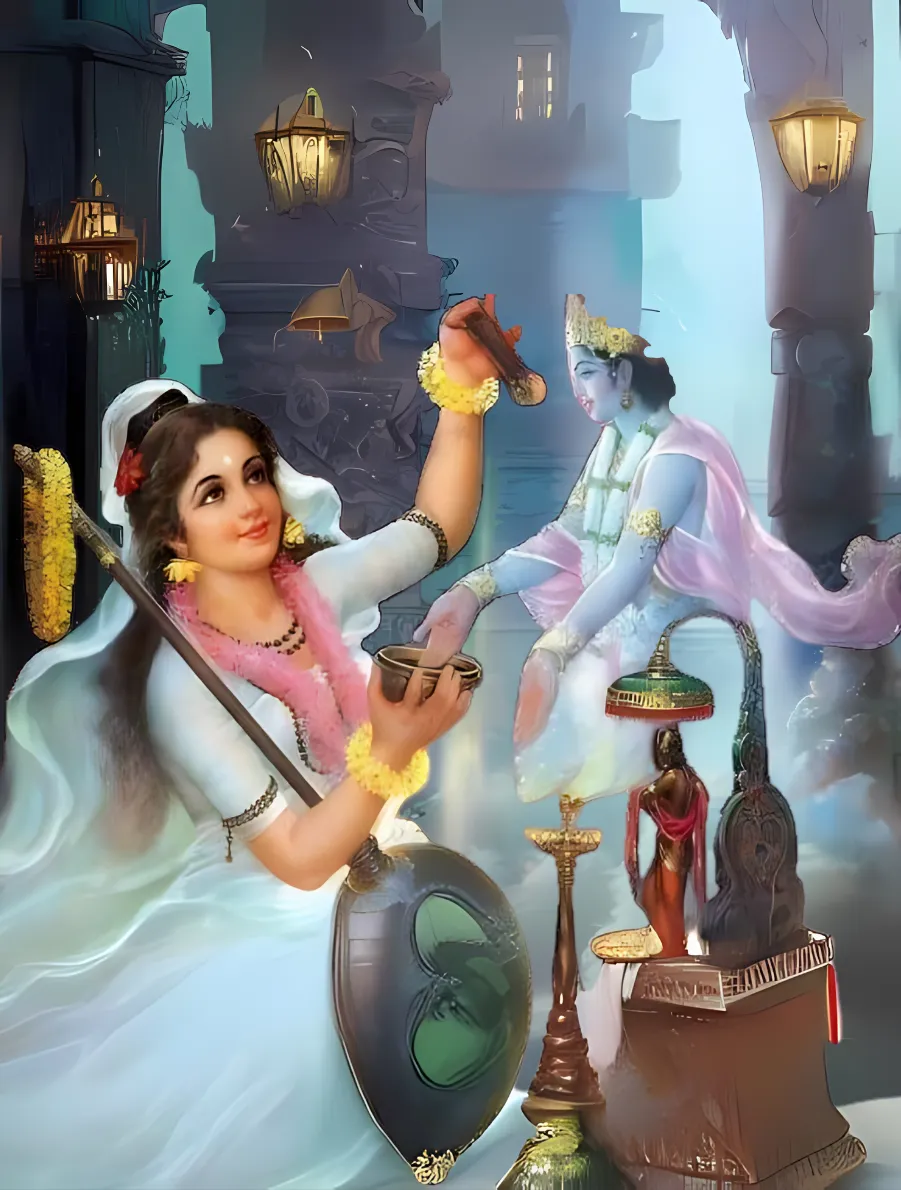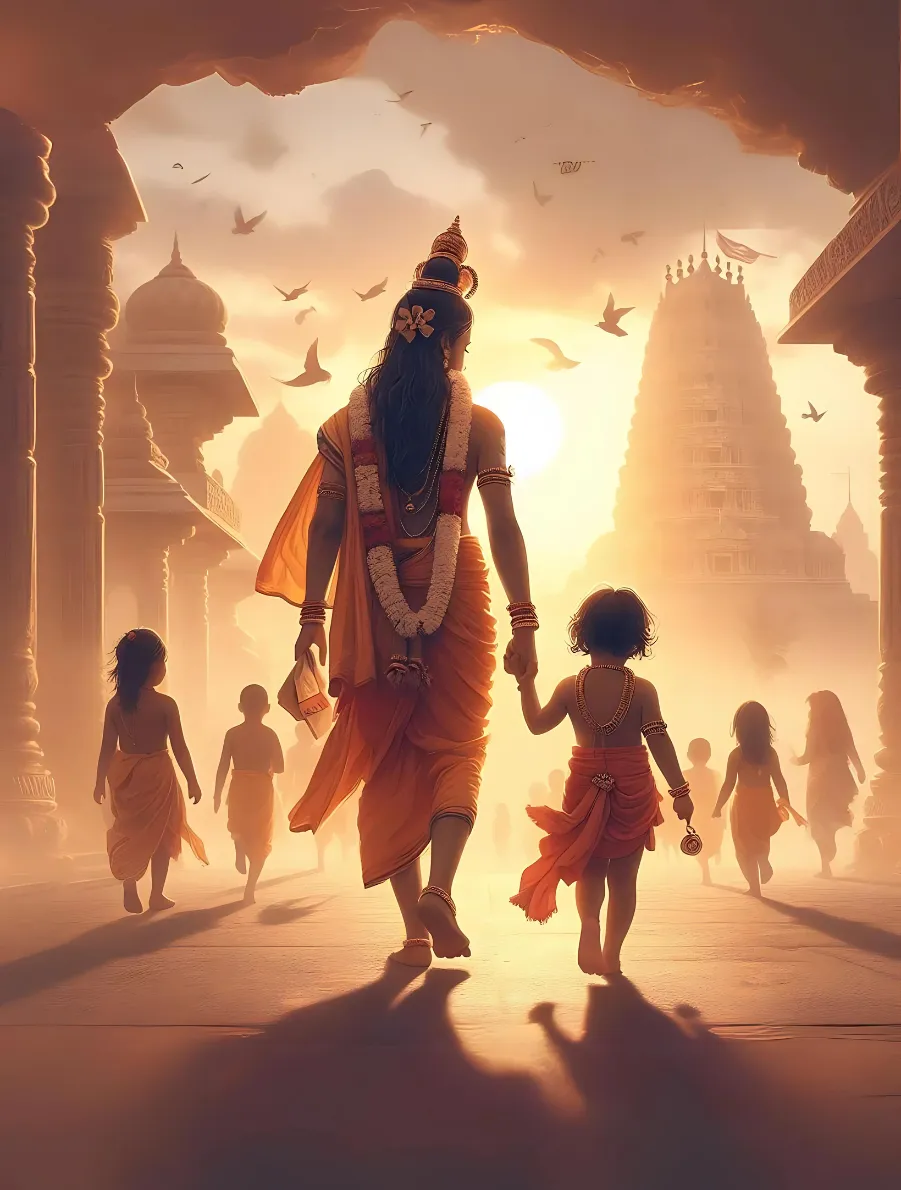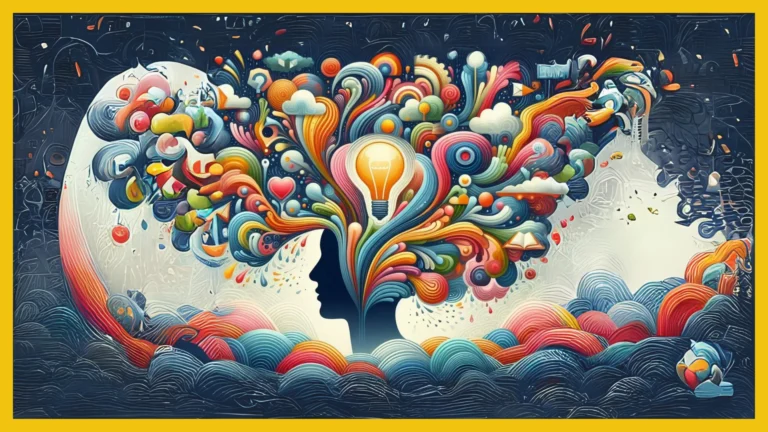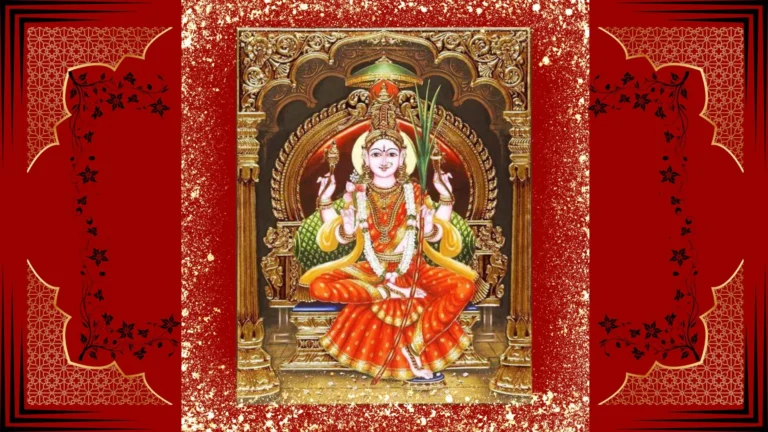Please Like the Blog and Share it for Maximum Reach
Table of Contents
Paths towards Ultimate Knowledge or God-Realization
There are two broad paths as prescribed in the Bhagavad Gita to attain God Realization:
The 2 paths are
- The Path of Knowledge or Jnana (ज्ञान) also called Samkhya Yoga (सांख्य योग)
- The Path of Karma Yoga (कर्म योग).
Does The Gita recognize the path of Bhakti?
Many students of Devotion/Worship/Bhakti understand Gita’s teachings as laying extra emphasis on Devotion. In addition, the Supreme Lord too has, in clear terms, revealed the glory of Bhakti in Chapter 6 Verse 47 of the Gita.
He declared in Chapter 8, Verse 14 of the Gita, that only Bhakti can bind Him. If this is so clear, can there be any doubt regarding the relevance of Bhakti Yoga? It is to be understood clearly that Devotion or Bhakti (also called Upasana (उपासना)) is the underlying force within the entire framework of Sanatana Dharma.
The True Import of Bhakti
Bhakti means to be obedient, in simplest terms. It also means to serve and to satisfy.
But this does not mean that Bhakti can be rendered to anyone and everyone. It does not mean sentimentalism or emotionalism.
Our heart melting for some poor people or bursting out in tears when hearing a sad story of someone’s life does not indicate Bhakti. Bhakti is not meant for people, but is an exclusive emotion for the Lord alone. Serving, satisfying and being obedient to materialistic, worldly people cannot qualify as Bhakti.
Only when this obedience and the sense of service is extended to the Supreme Lord can it be qualified as Bhakti. The word Bhakti is usually associated with the Supreme Lord, in His incarnation as Lord Krishna.
In the Bhagavad Gita, the Lord states that Bhakti can guarantee liberation or Mukti if it is only for Krishna (or any form of Vishnu). Bhakti is Upasana or a practice.
5 Prerequisite Knowledge Practices
There are 5 prerequisite practices that one must perform, in order to advance in Bhakti Yoga.
Vedanam
It is a branch of Jnana or Knowledge that Talks about Brahman. When we realize the futility of this world (Samsara), we attain Brahma Jnana. This is the first step towards Bhakti Yoga. Bhakti cannot arise with attachment for the world. Only when we realize impermanence and the fallacy of the world can we experience true love for God.
Care to be taken at the Vedanam Stage
Vedanam must be studied at a deeper level as it is rooted in the Upanishads.
It describes the Lord, His magnanimity, abode and pastimes. Also, it reveals the steps towards Mukti by exposing the different types of shortcoming ingrained in the world or Samsara.
The Brihadaranyaka Upanishad says that one should hear about Brahman, from an authorized source. Here is where Vedanam is very important. If we hear about Lord from books written by atheists we are moving towards self-destruction.
Always refer to the Upanishads, Srimad Bhagavatham, Ramayana and Bhagavad Gita to stay on track. Only then one should practice remembering the stories of the Lord. Do not read or try to contemplate on spiritual books written by immoral or those people who have nothing do with spiritual discipline.
This shall not Inculcate Pure Bhakti in Spiritual Aspirants like us. Keep away from such books, as they are meant to brainwash people. The Lord’s stories are not a figment of imagination but the very essence of Truth. Your sincerity towards your Sadhana will qualify you for Bhakti Yoga.
7/8 Questions from Sanatana Dharma
The scores generated in this Quiz may or may not be absolute. There may be right or wrong answers to each Question. A percentage towards 100 indicates that you are more aligned to the overall subject matter.
Dhyanam
Engaging the mind in constant contemplation of the Supreme Lord. All types of Mind-engagement cannot be regarded as Dhyanam. There are some characteristics that make it legitimate. The first condition is that one must know about the Lord, through Vedanam. Knowing is different from remembering.
We might meet many people and talk to them. But, if we do not consciously register them in our memory we are most likely going to forget the gentleman. Similarly, after Vedanam (knowing about the Lord), it is important to contemplate about the Lord and His qualities.
This act is also called Smaranam.
This is the second criterion to qualify for Bhakti Yoga.
Nidhidhyasana
When Dhyanam becomes an intrinsic part of your routine, it becomes Nidhidhyasana.
When you contemplate on the Lord at all times, it becomes Nididhysana. It basically means seeking without expectation. The contemplation should be such that there are no breaks.
It should flow on the mind’s screen like oil drops in a flow from one vessel to another.
It should be carried out throughout the day, without stop. If in any case, we lose track, again try to consciously bind the mind to the Lord’s pastimes.
Darshanam
The final stage of Nidhidhyasanam is Darshanam (दर्शनम). “Darshanam means meeting the Lord, be face to face with Him.” This is the claim of the Upanishads.
Anudhyanam
This is another terminology that Sri Ramanujacharya introduces about Bhakti. Anudhyanam is an extension of Dhyanam. It means to stick with complete attachment to the process of Bhakti. Just like a mother holds the hands of a child through a crowded road. The child completely depends and is guided by the mother.
Similarly in Anudhyanam, the second thought that strikes the mind should be associated with the first thought. To qualify for Bhakti, the first thought should be that of Bhagawan alone. Hence, through the concept of Anudhyana, we realize that every thought should be aligned to our goal of liberation. All the other thoughts should stick to the first thought, fully emulating Bhakti.
Thus, a train of thoughts follow each other, where all of those thoughts are an exact repetition of the first thought of Bhakti. This is Anudhyanam. This is the fundamental practice of Sri Sampradayam as well.
Candidates For Bhakti Yoga
Who can follow Bhakti Yoga?
There are only 2 factors, that determine the validity of a candidate of Bhakti Yoga.
1) Bhakti Yoga comes to only those people who desire for it.
2) Bhakti Yoga advances only if one, sincerely desires and engages in Dhyanam, Nidhidhyasanam and Anudhyanam.
Can Bhakti Yoga Be Forced on to the Individual so that he attains Bhagawan?

Both conditions for Bhakti Yoga cannot be forced from the outside. If one remembers the Lord accidently, a few times a day as part of the regular train of thoughts, cannot qualify itself for Bhakti or Upasanam.
Who is a right Candidate for Bhakti Yoga?
If an individual attends Satsanga through free-will and remembers the Lord through applied will, the Upanishads come to that individual’s aid. Only then they direct the seeker in the right manner. The greatness about Sanatana Dharma is that, it does not force anyone into any practice. Now, the option is completely with the living entity whether to qualify for Bhakti Yoga or not.
Can Divine Knowledge Be Completely Attained through Self-Effort?
Knowledge can never be completely attained by self-effort. The Mundaka Upanishad, states that- Knowledge was originally imparted in toto to the Rishis and the Divine beings. Indeed, true knowledge can flow only through the descent of knowledge-current from the sages. The ancient students possessed unparalleled perseverance to the ideal of Knowledge or Jnana. Truly, acquiring Jnana has a lot of groundwork behind it.
How could one possibly Attain Knowledge through Jnana Marga?
Firstly, the students must serve their preceptors with one-pointed devotion and obedience. This is mandatory for Jnana to appear in their being. Secondly, they must undertake hardships, austerities, penance, and long stints of meditation, as advised solely by their preceptor and not through any external means, outside the purview of what they believe is correct. They should meditate deeply on the aphorisms which were pregnant with the seeds of wisdom, as enunciated by their Guru.
The True Nature of Knowledge
Meditating deeply on these Vedic statements was like offering sunshine and water to the seeds of Jnana, in the ancient Vedic ages. Furthermore, the austerities and penance served as manure for the plant of Jnana to mature within their being.
Thus, the disciples of the Vedic age followed the authentic process, considering that their intelligence was not contaminated, as it is today, for most people. The hearts of the Vedic students blossomed with exceptional virtues perhaps unheard of in the current age.
The virtues produced by Jnana represent the flowers that appear prior to the fruition of trees. Indeed, Knowledge was the fruit that was to appear on the flowers of fragrant virtues.
Righteousness is not an option but the very law forming the base of one’s conscience.
Thus, this strong base gave rise to deepening introversion among the students whose second nature was to contemplate the nature of consciousness.
However, Such deep contemplation is impossible without spotless purity in character, devoid of the vices. A contemplative mood initiates the reception of pure knowledge.
Knowledge is a transmission. It is not a set of wordy rules but the awakening of a certain quality made possible through the right reception from an authorized source.
Knowledge only comes through deep contemplation, a quality of committed introversion.
Therefore, extroversion is naturally not recommended for the transmission of Pure Knowledge. Just like you need a degree in the educational field, only a qualified aspirant can take up Spiritual Knowledge.
Qualities of a Jnani
1) Renunciation or Vairagya (वैराग्य) is a non-exemptible qualification for receiving Divine knowledge.
2) Unless a living entity transcends all levels of attraction, at least in intention, there is no chance for upliftment.
3) Interestingly, this Knowledge cannot co-exist with worldly, self-centered activity.
It is not meant to be. Therefore True Knowledge is found only in those who have surpassed the mundane.
Please Like the Blog and Share it for Maximum Reach

